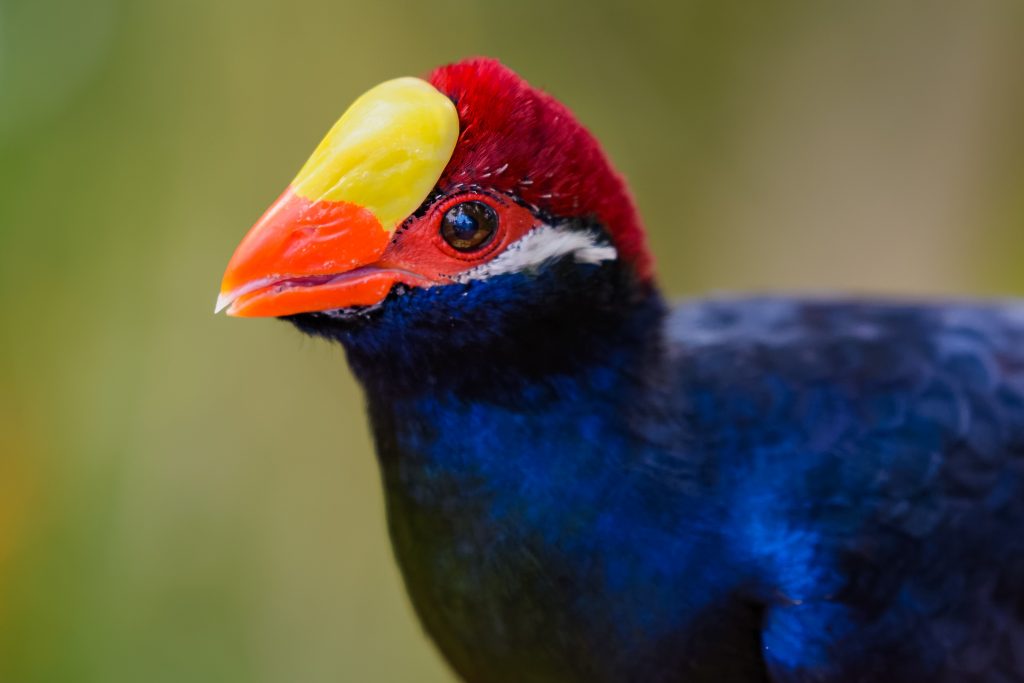What Birds Can I See on slope of Mount Kilimanjaro?
Sub-Sarahan Africa is a birder’s paradise, and the region surrounding Mount Kilimanjaro
is no exception to this rule. Ethereal bird calls echo through the trees as you glimpse
about, hoping to catch sight of the dazzling variety of feather and wing fluttering through
the canopy. Opportunities to see some of the beautiful species tropical Africa has to offer
will be most abundant in the areas surrounding your hotel and as the trail winds through the
cloud forest. Home to a diverse population of tropical African birds, the cacophony of
songs emanating from the trees will provide a magical soundtrack for the surrounding jungle scene.
To wet your whistle, here are a few of our favorite local species
Turacos,known as the Lourie further south, can be spotted flitting
through the forest where they consume mainly fruit and plant matter while eating a more
insect-based diet as chicks. Social birds by nature, Turacos travel in flocks of around ten
to twelve individuals. In the region surrounding Kilimanjaro, sightings of Hartlaub’s
Turaco, Schalow’s Turaco, and the Violet Crested Turaco are all possible.
Hartlaub’s Turaco
was named to commemorate German physician and ornithologist Gustav Hartlaub. The black
crest on its head, red surrounding its eye, and white spot anterior to the eye make for
a dramatic presentation. Green plumage decorates its breast while iridescent blue plumage
covers its back. Hartlaub’s Turaco can often be identified as the dash of crimson on their
underwings flashes brightly amongst a sea of forest green.

Schalow’s Turaco
was named to commemorate a German banker and amateur ornithologist, Hermann Schalow. This
frugivorous turaco is light for its species, weighing just over half a pound (270g), with a
length of 15-17 inches. Jade green plumage covers most of its body and flows into the long,
white-tipped crests upon its head. As its feathers near the tail, they fade to a dark,
shimmering blue. It has a small, red beak and red skin surrounding its dark eyes. Compact,
round wings with scarlet flight feathers make Schalow’s Turaco especially fit for short jaunts
through the canopy. Monogamous pairs share incubation duties of 2 egg clutches lasting from
20-22 days and care for their offspring together. Within 4-5 weeks, hatchlings can fly.

The unmistakable Violet Turaco
is quite timid and often inconspicuous. Also
known as the violaceous plantain eater, this large turaco is approximately 48 cm long (19 in),
including a long violet tail and a thick, 4 cm (1.6 in), reddish-orange bill. It has a yellow
forehead, chestnut crown, white ear coverts, and scarlet flight feathers that contrast with the
rest of its violet plumage. Like other turacos, the violet turaco consumes mostly insects and
plant matter. However, this brilliantly colored little fellow exhibits a particular preference
for figs.

The Hornbills
name commemorates the mistress of French ornithologist Francois
Le Vaillant. He derived Narnia from a Khoikhoi word for “flower” because he had a difficult time
pronouncing her given name. Deforestation has led to depletion of local numbers of this medium-sized
(32-34cm long), amaranth and green species. Some populations are migratory, while others are sedentary.
The sexes are dimorphic, with males exhibiting more dramatic coloring than the soft brown and dull
red females. When attempting to attract mates or defend territory, males produce a low repeated
hoot. The diet of the Narina Trogon consists of insects, rodents, and reptiles.
In Kilimanjaro’s cloud forest, you may also spy Hornbills
as they traipse from tree to tree high in the canopy. Hornbills are omnivorous birds, feeding on fruits, insects, small
birds, rodents, small reptiles, and centipedes. They usually live in pairs but have been known to
roost in flocks of hundreds of individuals as well.
 EN
EN CH
CH ES
ES DE
DE RU
RU
 FR
FR
 ET
ET


















